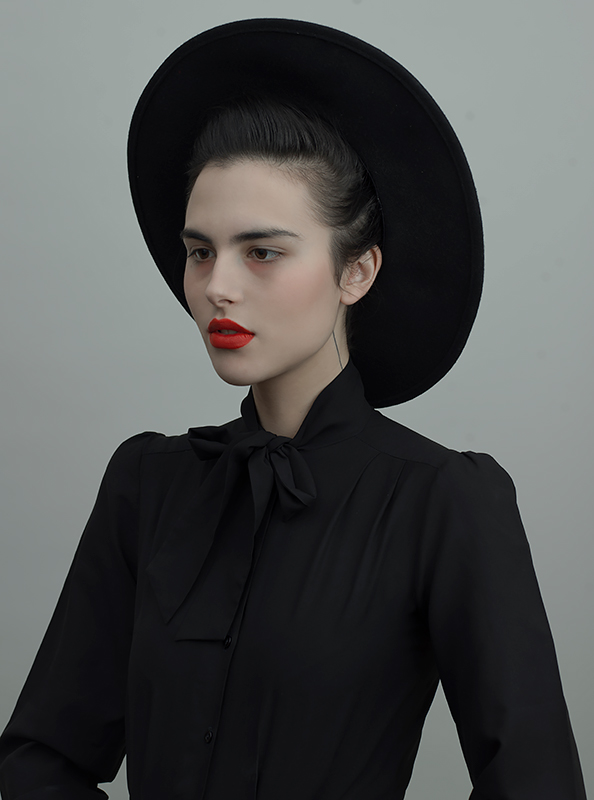Evelyn Bencicova is a visual creative specialising in photography and art direction. Informed by her background in fine art and new media studies (University for Applied Arts, Vienna), Evelyn's practice combines her interest in contemporary culture with academic research to create a unique aesthetic space in which the conceptual meets the visual.
Evelyn's work is never quite what first appears to be. Her photographs depict meticulously-controlled compositions characterised by an aesthetic sterility, tinged with poetic undertones of timeless desire and longing. Evelyn constructs compelling narrative scenarios that blur the lines between reality, memory and imagination — "fictions based on truth".
Depicting multifaceted representations as illusions, Evelyn plays with the viewer's perception to entice them into the secret labyrinth of her imagination. Her disturbingly beautiful visual language and washed-out colour palette, set within curiously symbolic environments, allow for a deep exploration of the themes that take her images far beyond what they reveal at first glance.
Evelyn's client repertoire includes fashion and luxury brands such as Gucci, Cartier and Nehera, as well as cultural institutions such as Frieze, Berghain, Kunsthalle Basel, Royal Opera House, Slovak National Theatre and Ballet and Museums Quartier Vienna. In 2018, Bencicova was invited to create visuals for the Institute of Molecular Biology in Austria, and to perform at the closing ceremony for Atonal Berlin.
Evelyn's commercial and artistic projects have been featured in the likes of Vogue Portugal, Vogue Czechoslovakia, ZEIT Magazine, ELLE, Dazed & Confused, GUP, HANT and Metal Magazine. Her work has been published in prestigious international photography books and on several online platforms (Juxtapoz, iGNANT.com, Fubiz media) and she has participated in solo and group exhibitions across Stockholm, London, Tokyo, Paris, Berlin, Vienna, Milan, Amsterdam, Brussels, Prague and Rome to mention few.
In 2016, Bencicova received the prestigious Hasselblad Masters and Broncolor GenNext awards. She was shortlisted and awarded by Taylor Wessing Photographic Portrait Prize, LensCulture, Independent Photographer, Gomma Grant, Life Framer, Photo IS:RAEL, Young Guns 17, Tokyo International Photo Award and Photo Vogue and OFF Festival. Her fashion film "Asymptote" (2016), co-created with Adam Csoka Keller, received the "Best New Fashion Film" award at the Fashion Film Festival Milano 2017, and was featured at SHOWstudio Fashion Film Awards, the Austrian American Short Film Festival and at Diane Pernet's A Shaded View on Fashion. Evelyn was selected as one of 30 under 30 Female photographers by Artpil.
